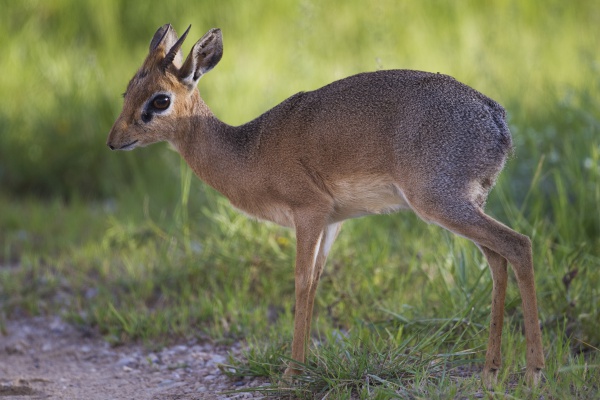Facts About Dik-dik
Dik-diks are diminutive and charming antelopes native to eastern and southern Africa. Their name derives from the distinct alarm calls of the females, which sound similar to whistles. Standing only 30-40 centimeters tall and weighing between 3-6 kilograms, these petite creatures can live up to 10 years. Curiously, female dik-diks are slightly larger than males. While males have tufts of hair on their heads, it is the males, not the females, that sport horns.
One of the most fascinating aspects of dik-diks is their unique adaptations. They possess elongated snouts that aid in thermoregulation and specialized glands that enable them to mark their territory with scent. As herbivores, they feed on leaves, shoots, fruits, and berries and require minimal water to survive. Their complex digestive system allows them to ruminate, resembling the process seen in cows.
Dik-diks are renowned for their monogamous relationships and territorial behavior. They mate twice a year, typically producing a single offspring each time. Unfortunately, only about half of these young dik-diks reach adulthood. By seven months, they attain full size and are usually driven off to establish their own territory.
Predators such as leopards, lions, hyenas, and humans pose significant threats to dik-diks. To evade these dangers, they rely on their keen eyesight and can sprint at speeds up to 42 km/h. There are four distinct species of dik-diks: Günther's dik-dik, Kirk's dik-dik, Silver dik-dik, and Salt's dik-dik, each exhibiting unique traits.
These small antelopes typically inhabit the shrublands and savannas of eastern Africa. They create specific pathways within their territories to facilitate navigation and safety. Despite their modest size, dik-diks are a remarkable testament to nature's adaptability and resilience.

 South Sudan
South Sudan